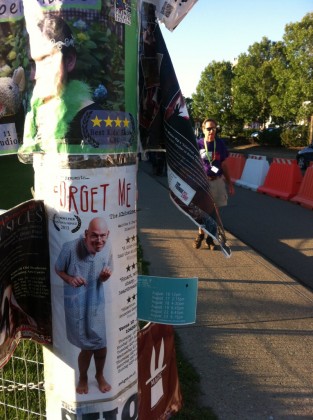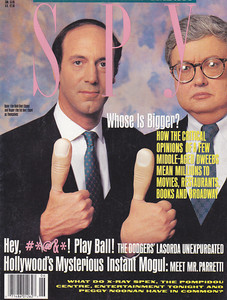Fringe festival stuck with star system
Posted on August 23, 2013 By Mike Ross entertainment, Entertainment, Front Slider, Theatre, TV and Radio
 Fringe artists hate the star rating system – and they love the star rating system. Is it time to get rid of it?
Fringe artists hate the star rating system – and they love the star rating system. Is it time to get rid of it?
Fringe artists recently replied, “Yes … but no!”
Rest assured that any thespian bestowed a four or five-star review from one of the area print publications will be out there at the site hawking it to the masses as soon as it rolls off the presses. If it’s in the Edmonton Journal, especially from Liz Nicholls, the artists often don’t even have to do that. The show will probably sell out the rest of its run.
A bad review, on the other hand, can hurt. Competition is fierce with more than 200 plays being produced over the same 10 days in the same city, so the critics’ star ratings actually become important – love them or hate them. Dozens of critics from at least six different major media outlets (and countless blogs) worked the Fringe this year. The stars were flying.
Fringe artist and CBC guy Paul Matwychuk expresses the love-hate relationship, “You put a lot into a show, months of work, and then it all gets boiled down into 150 words, and no one even reads it because they’re just looking at the star rating … I sometimes wish they’d just get rid of it, but I guess that’s the nature of the Fringe.”
Matwychuk’s Fringe show this year, Mexican Blindness, got four stars from Liz Nicholls – and there are still seats available for the remainder of the run. Maybe if it had been a five.
 What exactly are these star ratings worth in terms of cold, hard bums in seats? The late, great Spy magazine did a cover story in 1990 attempting, hilariously, to mathematically quantify the dollar value of good or bad reviews from prominent critics. Siskel and Ebert came out on top, followed closely by New York Times theatre critic Frank Rich, known as the “Butcher of Broadway.” It’s hard to replicate the experiment for the Fringe (which is why we didn’t do it), but the random artist poll did reveal did yield some good data. There was no shortage of artists to poll, as many of them were busy handing out flyers trumpeting their four- and five-star reviews in hopes of a big weekend to close out this year’s edition of the Fringe.
What exactly are these star ratings worth in terms of cold, hard bums in seats? The late, great Spy magazine did a cover story in 1990 attempting, hilariously, to mathematically quantify the dollar value of good or bad reviews from prominent critics. Siskel and Ebert came out on top, followed closely by New York Times theatre critic Frank Rich, known as the “Butcher of Broadway.” It’s hard to replicate the experiment for the Fringe (which is why we didn’t do it), but the random artist poll did reveal did yield some good data. There was no shortage of artists to poll, as many of them were busy handing out flyers trumpeting their four- and five-star reviews in hopes of a big weekend to close out this year’s edition of the Fringe.
Edmonton playwright David Belke, a 22-year festival veteran, says that “a bad review can kill you dead” – and that includes the three-star middling ones – but observes that one or zero-star reviews can sometimes help, due to curiosity factor, “a little.”
UK actor Rob Gee, another veteran of the Edmonton Fringe, says, “A good review from anywhere will help you, and a bad review from the Journal can hurt you. The rest are in a pool. Bad reviews from anywhere else won’t really harm you at all. You can ignore them.”
 What does he know? Gee’s one-man show “Forget Me Not” has earned rave reviews across the board, and the rest of the run is sold out. So did Jake’s Gift, and it’s sold out. Martin Dockery’s Bursting Into Flames (right) and The Legend of White Woman Creek are two of the plays that earned the highest ratings from the three print outlets – and they’re sold out. It’s not hard to find other examples.
What does he know? Gee’s one-man show “Forget Me Not” has earned rave reviews across the board, and the rest of the run is sold out. So did Jake’s Gift, and it’s sold out. Martin Dockery’s Bursting Into Flames (right) and The Legend of White Woman Creek are two of the plays that earned the highest ratings from the three print outlets – and they’re sold out. It’s not hard to find other examples.
There are other factors – word of mouth, the return of a proven hit or name recognition, or on the downside a crappy schedule – but in the end reviews have the biggest impact on attendance, according to the artists.
Respondents were asked to rank the local media outlets in terms of the effect of Fringe reviews on the bottom line. The unanimous first pick is the Edmonton Journal, which sends its entire entertainment team and then some to cover the Fringe like no other event of the year. They’ve been doing it for decades. The rest is close race. Some artists picked Vue over the Edmonton Sun for the No. 2 spot, unless the review is from the Sun’s theatre critic Colin Maclean, who has at least as much experience as Liz Nicholls. She is, however, considered a tougher critic and so a rave from her is more “valuable,” says one artist.
Generally ranking below the print media are various CBC sources and Todd James from Global-TV. It’s not that they don’t have the reach, but the reviews air once and then they’re gone – unless you want to go to the website, root around for the relevant file and sit through the video, which invariably has a commercial attached. Who has time for that?! We don’t even have time to read a 150 word review!
There are Fringe shows that are immune from reviews. Edmonton producer and playwright Ellen Chorley says she’s received lukewarm critiques in the past and her shows still did well. Of course they’re children’s shows, and given that the Kids Fringe or Australian buskers can quickly wear thin, indoor kiddie shows are always a hot ticket. On the other side, there have been R-rated shows that contain sex and nudity and all sorts of unsavoury behaviour where a story was supposed to have been, and of course it gets carved by the critics – but they sometimes sell out, too. Word of mouth.
A lot of Fringegoers love the star system. They’ll sometimes just clip out the star charts that don’t actually have any reviews attached to them. Five = good. One = bad. And that’s how they decide where to spend their money: The best show by the numbers that isn’t already sold out.
Is it an accurate guide? No, but it’s a close as you can get. Chances are if you see a five, you’ll like it; if you wind up at a one, you won’t. Yet there are still Fringers who will actually read the in-depth reviews those poor critics sweat over. They do some research before buying tickets. After all, the most common question overheard at the Fringe isn’t, “How many stars did it get?” but “What have YOU seen that’s good?”
Everyone’s a critic.











